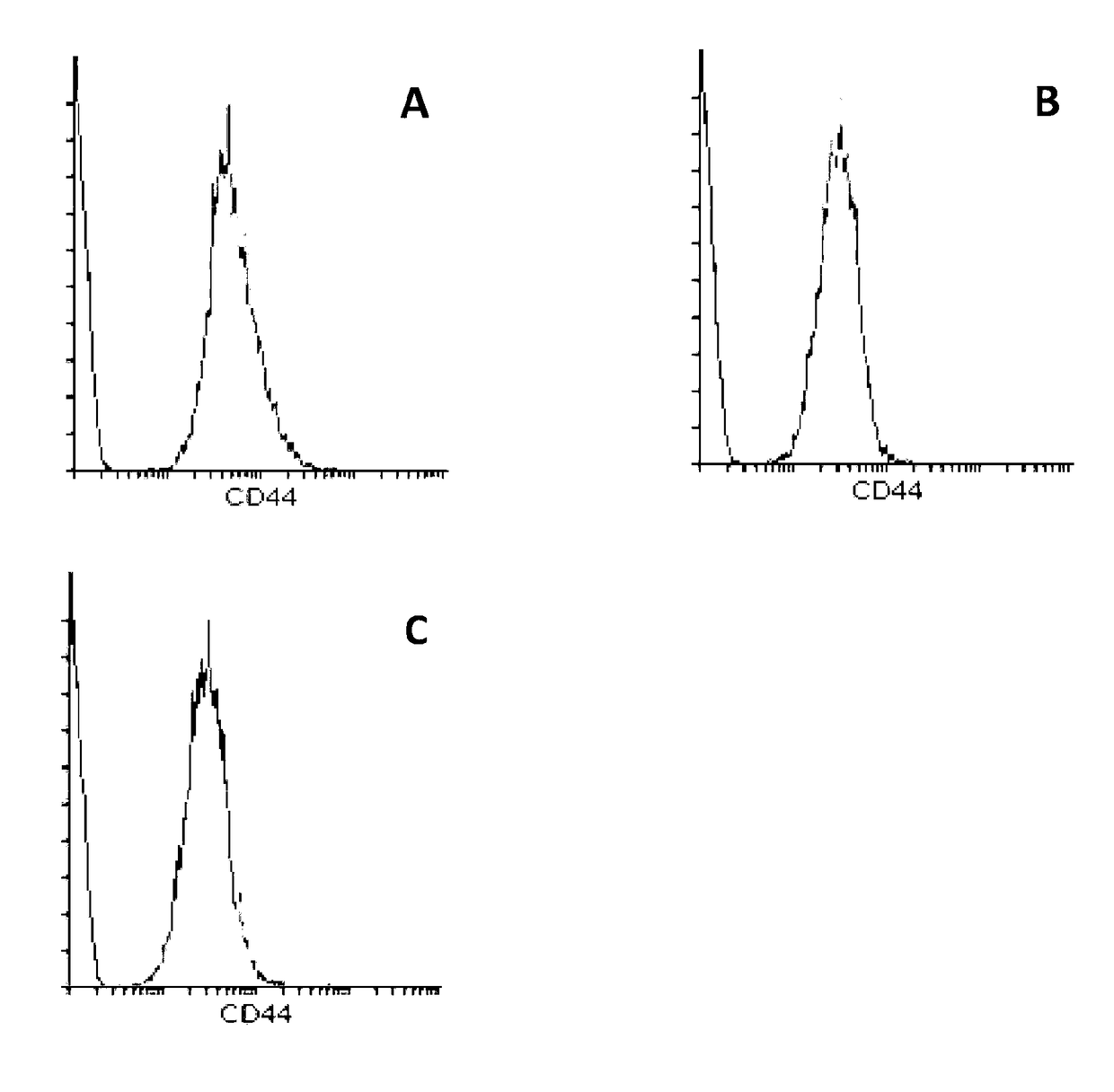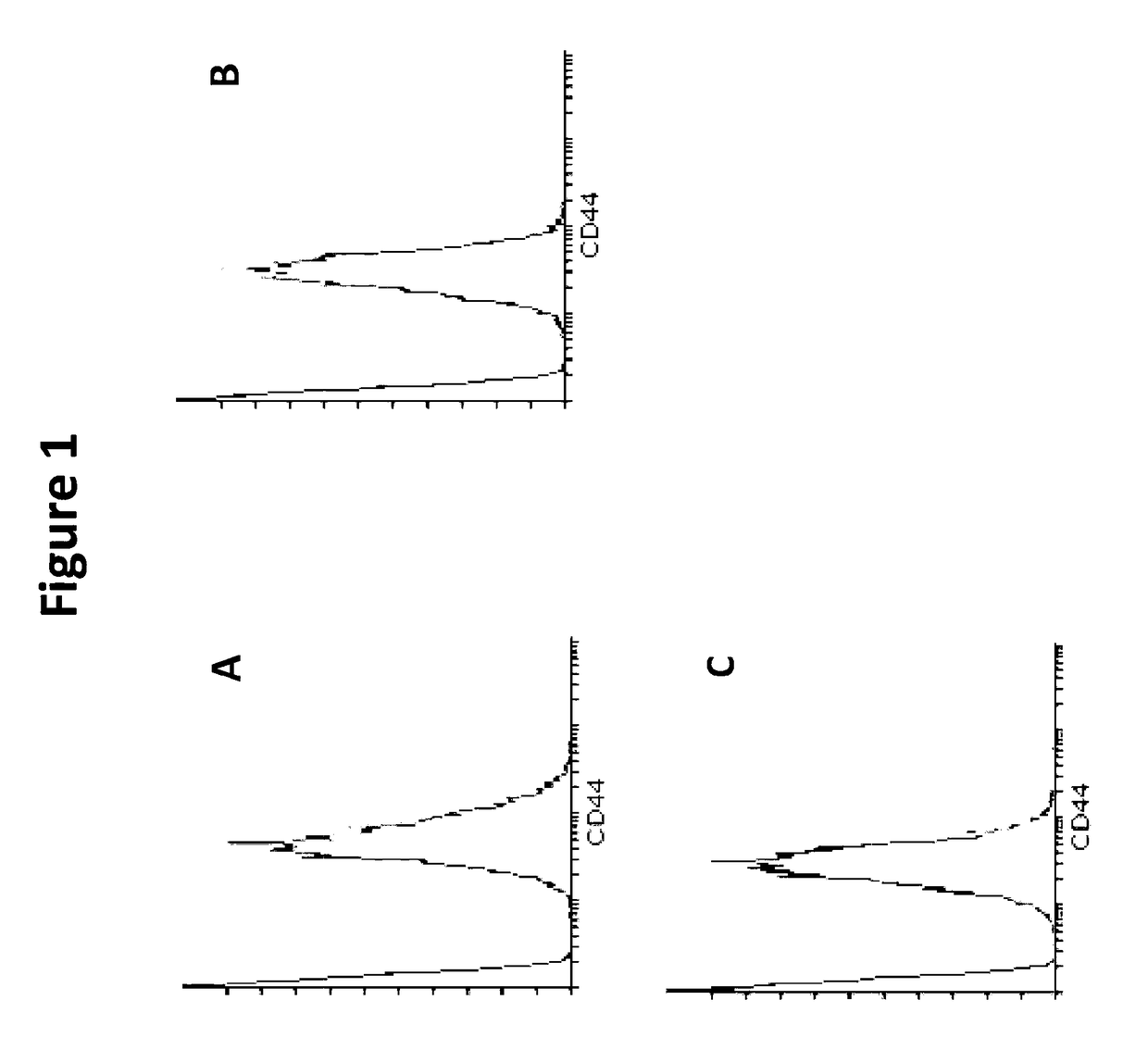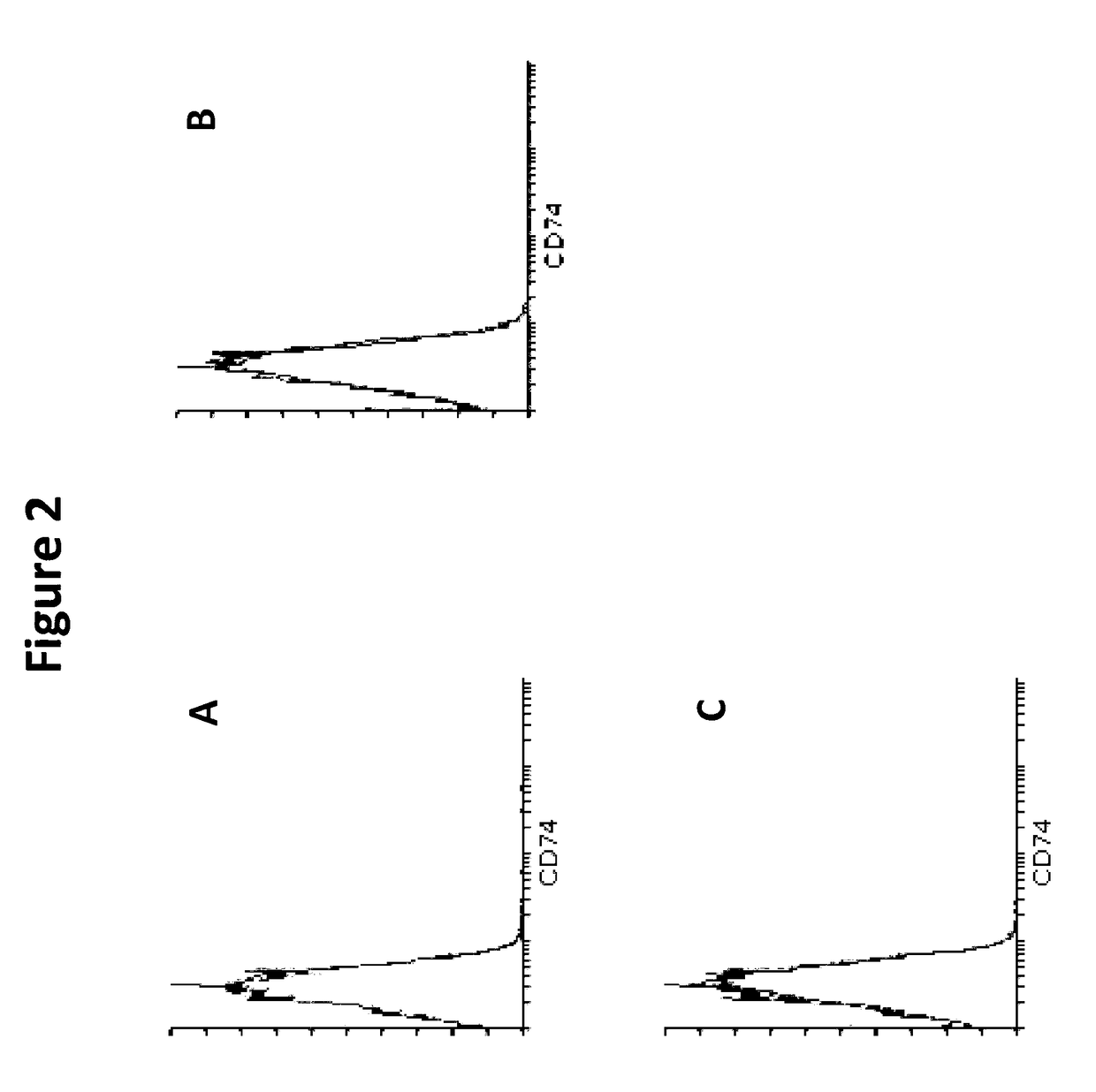Blood Preparation and Profiling
a blood preparation and profiling technology, applied in the field of haematology, can solve the problems of adversely affecting the accuracy of known protein profiling and inadequate current analyses, and achieve the effects of increasing the ability to detect proteins, increasing the detection level, and being easy to d
- Summary
- Abstract
- Description
- Claims
- Application Information
AI Technical Summary
Benefits of technology
Problems solved by technology
Method used
Image
Examples
example 1
ting the Presence of the MIF Receptor on the Surface of RBCs
[0209]RBCs contain MIF. To determine whether RBCs have a receptor to bind MIF they were analyzed for the most well-known receptor for MIF, a complex formed between CD44 and CD74 on the cell surface. Immunophenotyping was used to identify the absence or presence of CD44 and CD74 on RBCs. Whole blood (WB) was collected into an EDTA vacutainer, washed twice in PBS+FBS (2%) (centrifuged at 500 g, for 5 minutes) and finally resuspended to 1 mL of solution. 5 uL of solution was added to each respective tube. Cells were then stained with 5 μL or 20 μL, of each antibody (anti-CD44, anti-CD74, anti-CD45, and an IgG control) and 50 μL of PBS+FBS (2%). Cell solutions were incubated in the dark at room temperature for 15 minutes and after incubation, cells were washed three times in 1×PBS (500 g, 5 minutes). Cells were resuspended in 200 uL of PBS and were analysed by flow cytometry using quadrant statistics and overlay histograms
[0210...
example 2
ization in RBCs
[0211]RBCs were analyzed for the localization of MIF using immunocytochemistry. Whole blood was collected into a syringe and washed twice in 1×PBS (spun in a centrifuge at 500 g, for 5 minutes). The cell pellet was the used to prepare blood smears (10 μL per slide) and the blood slides left to dry at room temperature for at least 2 hours. Once the slides were completely dried, the smears were fixed in 100% methanol for 5 minutes at room temperature. After the slides were fixed, they were removed from the methanol and were left to air dry for ˜10 minutes. Slides were washed thoroughly with 1×PBS and blood smears were then blot dried. The smears were blocked with PBS+5% BSA for 1 hour at room temperature. After blocking, the samples were incubated with or without primary MIF antibody (anti-human, rabbit MIF antibody, 1 μg / mL) overnight at 4° C. After incubation, slides were washed well with 1×PBS and then incubated with secondary antibody (anti-rabbit, AP conjugated ant...
example 3
ting the Presence of MIF in RBCs
[0216]Because MIF levels were ˜1000 times higher in RBCs than in plasma, RBCs were analyzed for their intracellular levels of MIF. Whole blood was collected from the capillary bed (fingertip collection). Blood was anti-coagulated (1:1) with EDTA (30 mg / mL) solution and washed twice with PBS+FBS (2%). Cells were stained with CD45-FITC (5 μL) for 15 min at room temperature in the dark. After incubation, cells were washed twice with 1×PBS and RBCs were then isolated using negative sorting by flow cytometry (FACS). RBCs and WB were pelleted by centrifugation (2000 g, 10 minutes) and were resuspended to 250,000 cells / 50 μL. Cells were frozen at −80° C., and samples were subjected to 3 freeze / thaw cycles to lyse all the cells. Samples were then analysed on a Hu MIF ELISA. For fingertip and venous blood, whole blood was collected from either the capillary bed (fingertip collection) or from a vein. Blood was anti-coagulated (1:1) with EDTA (30 mg / mL) solution...
PUM
| Property | Measurement | Unit |
|---|---|---|
| volume | aaaaa | aaaaa |
| volume | aaaaa | aaaaa |
| volume | aaaaa | aaaaa |
Abstract
Description
Claims
Application Information
 Login to View More
Login to View More - R&D
- Intellectual Property
- Life Sciences
- Materials
- Tech Scout
- Unparalleled Data Quality
- Higher Quality Content
- 60% Fewer Hallucinations
Browse by: Latest US Patents, China's latest patents, Technical Efficacy Thesaurus, Application Domain, Technology Topic, Popular Technical Reports.
© 2025 PatSnap. All rights reserved.Legal|Privacy policy|Modern Slavery Act Transparency Statement|Sitemap|About US| Contact US: help@patsnap.com



